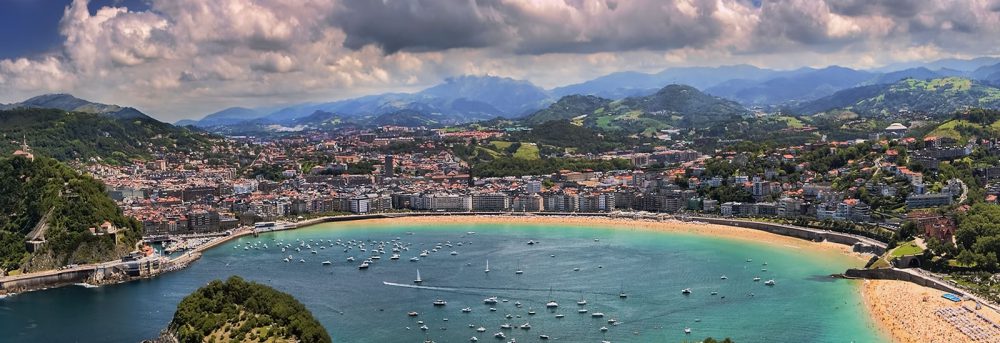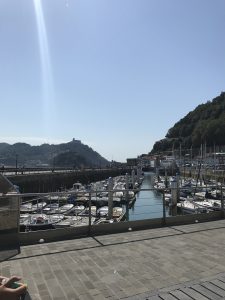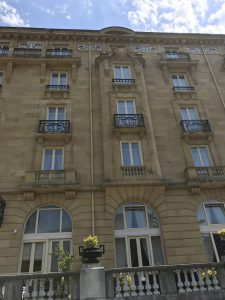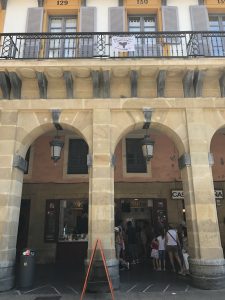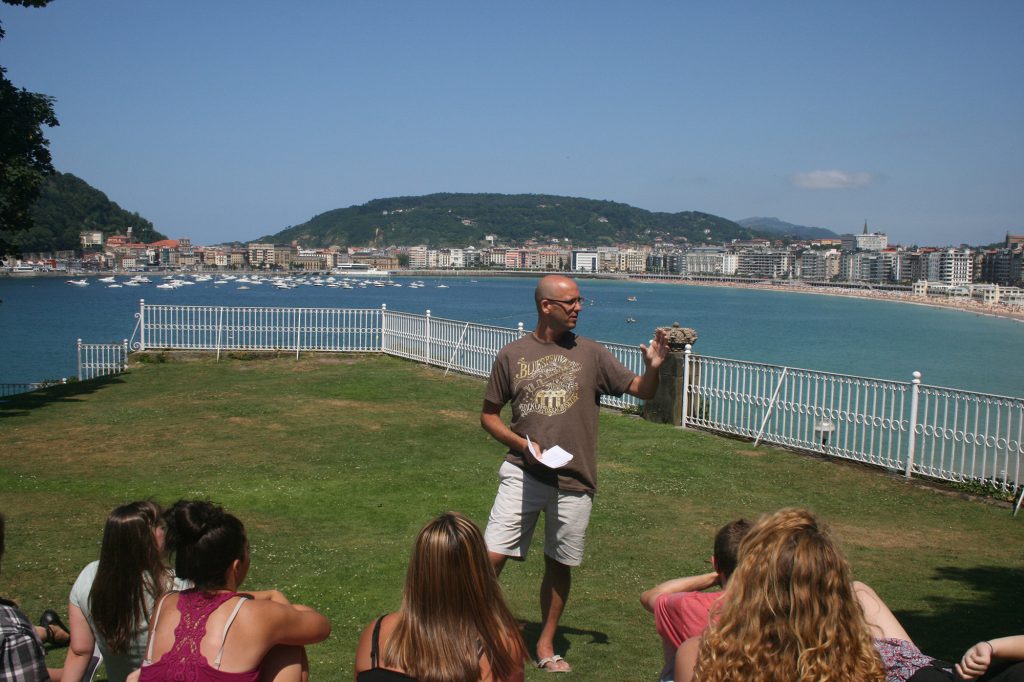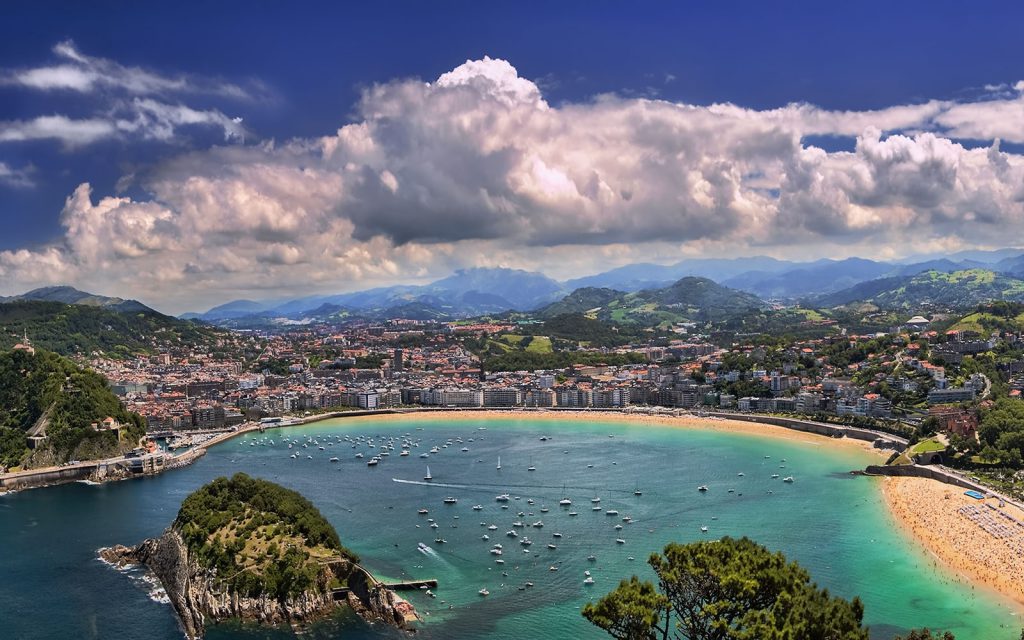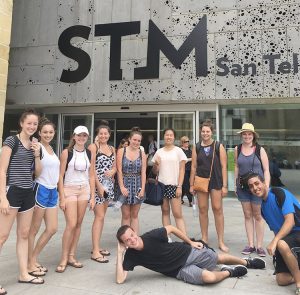
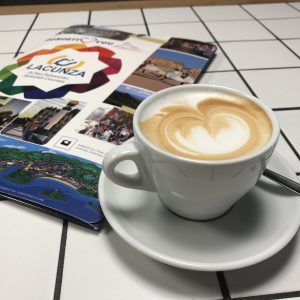
Today was our second day here so all of us were somewhat used to it. Today Corrina and I actually knew where the school was so we didn’t get lost like we had the day before. We were early enough that we even had time to stop for a quick café con leche (the drink of choice for most) at an adorable but relatively busy cafe near the school. School was, well school. Not super exciting but all of us learned, and will continue to learn, new things about the Spanish language that we continue to use making our way through San Sebastián.
The weather was absolutely horrible. To describe the heat oppressive would not be doing it justice. Every time we walked outside, the heat would swallow us whole. I think it might’ve even reached 100 degrees during the hottest part of the day. But luckily enough, we were able to visit the San Telmo Museum during that time. This museum celebrates Basque Culture by providing tourists and locals information about its rich history, showing it in chronological order.
The first stop on the tour is a room full of steles, all different but equally beautiful. These steles were representing how Basque people still continue to honor and respect their ancestors who came before them. The next room delved into more history about their ancestors, showing all the challenges they had to endure in their daily life. This room exhibited old harpoons that were used to kill whales, which was an extremely large part of the Basque culture back then. The other interesting part of the room was seeing all the different headdresses. They were once used to establish the level of wealth of a woman, but eventually were banned due to them looking phallic and being tied to witches in the 18th century. The following room showcases the large transformations made to the Basque society in the 19th and 20th centuries. This area really showed the large change from rural life towards the more industrialized society of today.
To top it all off, the museum had a temporary exhibit about the genius behind numerous movies, Alfred Hitchcock. This part was super interesting to walk around and see so many different items showcasing his talent in directing. Hitchcock always believed that directors should be able to control the entire movie making process; from choosing the story to tell, all the way through to the end or promotion and marketing of his films before opening night. One particular and fascinating part of the exhibit was seeing the story boards he created. Hitchcock was so dedicated to his story boards that he drew them for all of his movies and showcased them frame by frame, sometimes only a slight detail between one story board and the next. Another notable part of the Hitchcock exhibit was seeing blown up plexiglass images from The Birds. This exhibit was both informative and super interesting to walk around but also inspired me to go back and watch some of his classics that I’m ashamed to admit that I haven’t seen.
Once we were finished with the museum, we decided that we couldn’t let the gorgeous weather go to waste. So we made our way over to probably the busiest beach, La Concha. By this time though some clouds started to roll in, slowly but steadily covering the sun and allowing for the beach to actually be slightly cooler. This was definitely one of the highlights of the day, just lying down on the sand and relaxing. Even though we technically are here for school, the pressure is not nearly as great and allows for times of relaxation to be even sweeter.
